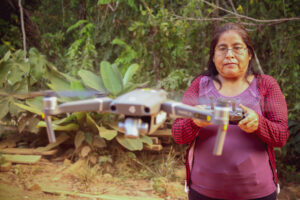 Every morning, Marcelina Gamarra opens her business of selling wooden cutting boards in the city of Puerto Maldonado and sits down to barter with her clients. However, during the 5-month harvest season in Peru, she focuses almost exclusively on the sustainable harvesting of Brazil nuts. “I collect the nuts from my dad’s concession, going deep into our forests to get them. I have always supported my dad and my family this way. With the money from the harvesting, we have been able to grow and expand to other activities like creating the wooden boards,” explains Marcelina. Her father was one of the first Brazil nut extractors in the area, but since losing his sight, he depends on the support of his 48-year-old daughter to survive.
Every morning, Marcelina Gamarra opens her business of selling wooden cutting boards in the city of Puerto Maldonado and sits down to barter with her clients. However, during the 5-month harvest season in Peru, she focuses almost exclusively on the sustainable harvesting of Brazil nuts. “I collect the nuts from my dad’s concession, going deep into our forests to get them. I have always supported my dad and my family this way. With the money from the harvesting, we have been able to grow and expand to other activities like creating the wooden boards,” explains Marcelina. Her father was one of the first Brazil nut extractors in the area, but since losing his sight, he depends on the support of his 48-year-old daughter to survive.
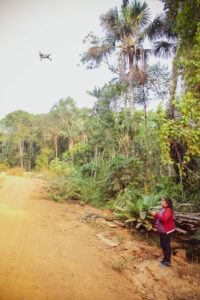 “Here, the fear I have is that squatters will enter our forest concession and begin destroying it. What would happen if they make our forest into farms, set it on fire for agriculture and that fire leaves us without Brazil nuts?” Forest fires are already exacerbated in the dry season in the region because people take advantage of the lack of rains to burn pastures or felled forest to make spaces for livestock. Generating these fires is prohibited by law, but many ignore these regulations as the government often cannot gather evidence of this illegal activity to prosecute offenders.
“Here, the fear I have is that squatters will enter our forest concession and begin destroying it. What would happen if they make our forest into farms, set it on fire for agriculture and that fire leaves us without Brazil nuts?” Forest fires are already exacerbated in the dry season in the region because people take advantage of the lack of rains to burn pastures or felled forest to make spaces for livestock. Generating these fires is prohibited by law, but many ignore these regulations as the government often cannot gather evidence of this illegal activity to prosecute offenders.
“Now that I know how to fly the drone, I can see that others do not enter my forest to destroy it and I can help my neighbors do the same.” Marcelina has been trained and certified as a drone pilot, and has 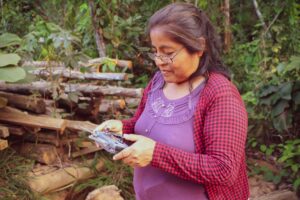 received all the technology she needed to do regular surveillance of her forest remotely, including a Mavic 2 drone, an iPhone 7 plus to run satellite monitoring smartphone apps, a computer and a printer.
received all the technology she needed to do regular surveillance of her forest remotely, including a Mavic 2 drone, an iPhone 7 plus to run satellite monitoring smartphone apps, a computer and a printer.
“I never thought I’d be using drones to patrol my forests and keep my family’s future safe, but I’m excited that I can take on this role with the help of Amazon Conservation.”
Special thanks to The Sheldon and Audrey Katz Foundation for their generous support that makes this project possible.

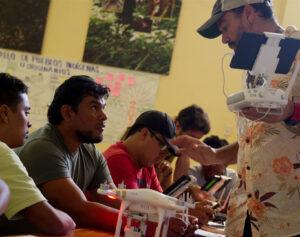
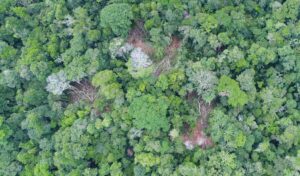
